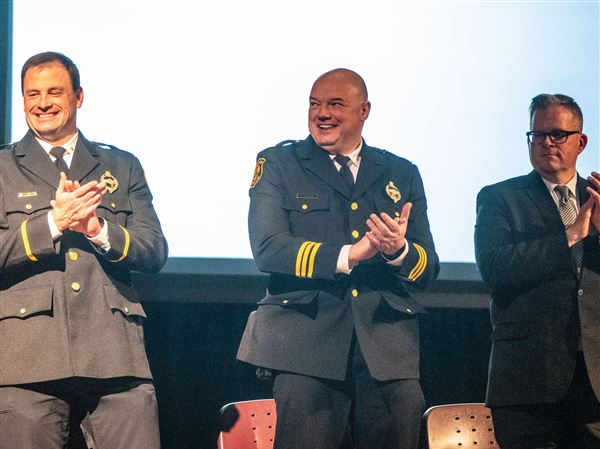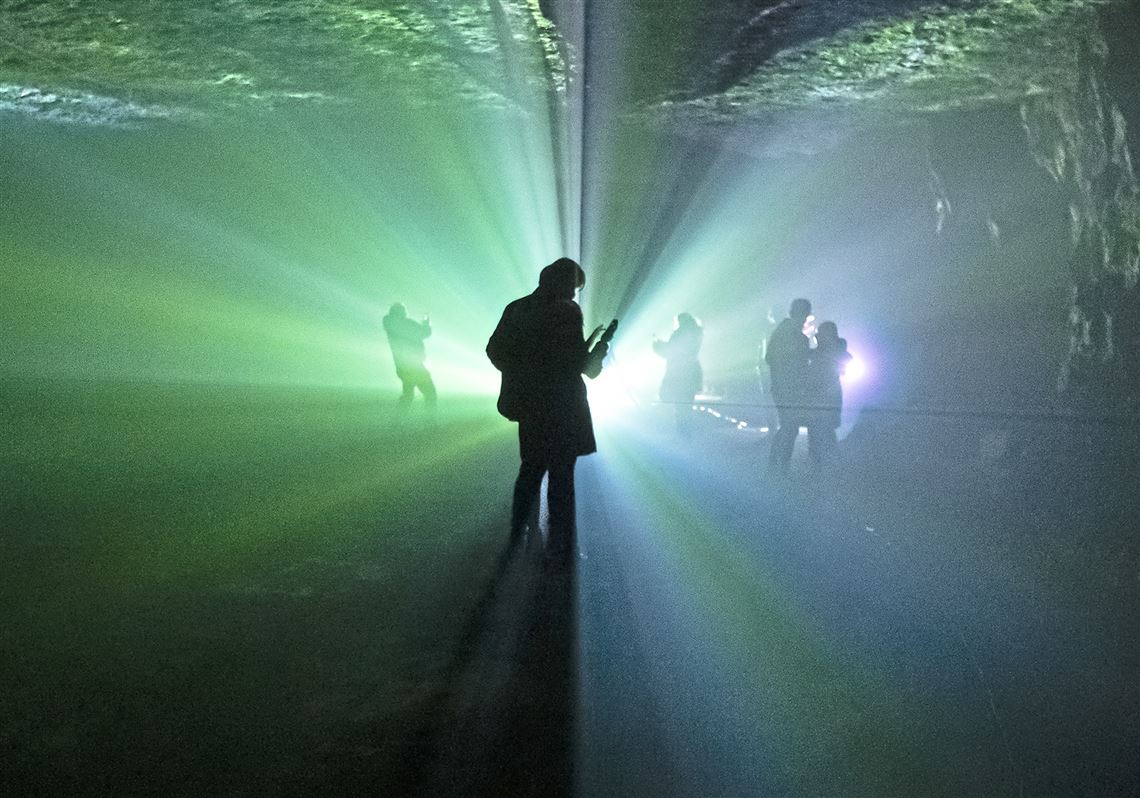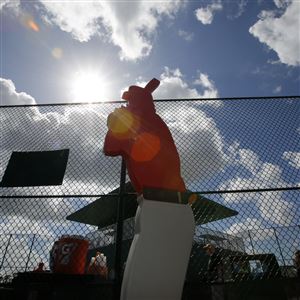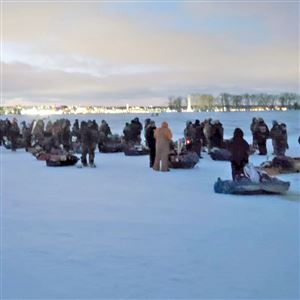_________________
For the second year, Carnegie Mellon University bused roughly 200 audience members to an Armstrong County limestone mine about 50 miles northeast of Pittsburgh to experience an art installation and concert deep among the twisting tunnels.
Titled “Subsurface: Site-Specific Sight and Sound,” the Saturday event in East Brady paired electro-acoustic, improvisatory music with art and light installations and what the school called “Activated Anamorphs,” or performance artists costumed with sculpted garments intended to evoke subterrestrial life.
The musicians hailed from CMU’s experimental “Exploded Ensemble,” directed by Annie Hui-Hsin Hsieh, Lance LaDuke and Jesse Stiles, whose band Bombici also performed. Instruments used ran the gamut from melodicas and keyboards to brass and strings and electronics.
On arrival, attendees enter the mine and wander through the tunnels for a little over an hour to take in the experience at Brady’s Bend Underground Storage facility. Owner Daniel Bruce is a CMU alumnus. While “Subsurface” only utilized a small portion of the tunnels, the mine’s true size defies comprehension with its more than 625 miles of underground road.
It was an aggressively captivating experience, equal parts beautiful and bizarre. Visual artists took full advantage of the lengthy tunnels, distorting perceptions of space and shadow with sequential light displays and roving projections. The closed-in nature of the tunnel created for some breathtaking shadow-play. The musicians wandered among listeners, playing into microphones that broadcasted to networked speakers throughout the mine.
Visual installations (directed by Richard Pell, one of the event’s organizers) ranged from an inflatable human torso to a projected picture window that changed color in response to sound. The Anamorphs (directed by Scott Andrew, another organizer) felt especially alien; each had a piece of defining sculpture affixed, either antlers or long wooden claws or glowing, bulbous orbs. These artists wandered throughout the exhibition, pausing to occasionally menace visitors.
Particularly striking this year was a fully automated mechanical bagpipe, the brainchild of Roger Dannenberg, that delivered a virtuosic romp of its own accord as listeners traipsed by.
Jeremy Reynolds: jreynolds@post-gazette.com or 412-263-1634; twitter: @Reynolds_PG. Mr. Reynolds' work at the Post-Gazette is supported by a grant from the San Francisco Conservatory of Music, Getty Foundation and Rubin Institute.
First Published: December 3, 2018, 12:19 a.m.
Updated: December 3, 2018, 12:19 a.m.

















